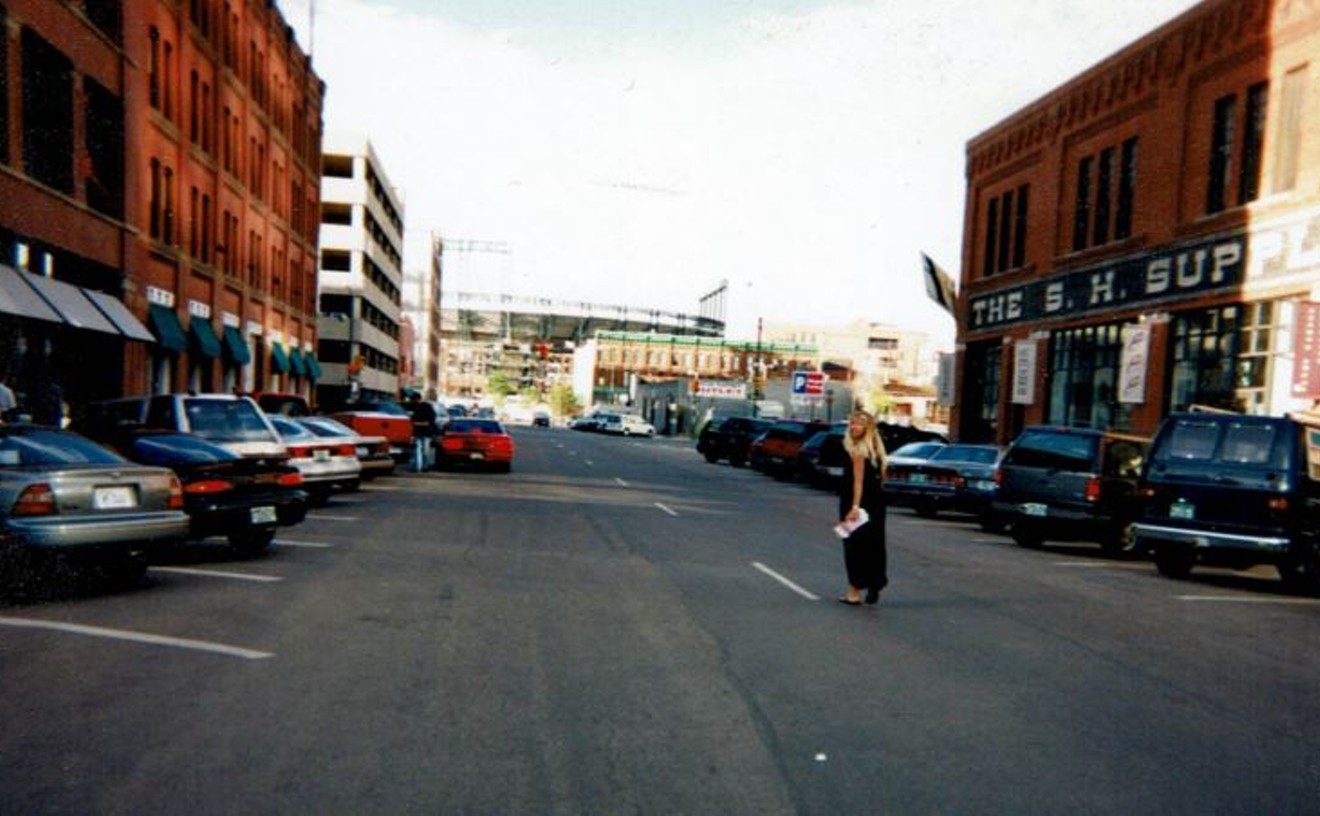The hidden mothers, either holding their children on their lap to keep them still, or propping them up in a standing position, were often draped in fabric, framed over or their faces were scratched off the surface of the photo. Artist Laura Shill became enthralled with these images during her MFA program at CU Boulder, and for her new show at Colorado Photographic Arts Center, Tracing Absence, curated by Marlow Hoffman and also featuring artist Adam Milner, she examines the relationship between faces and identity.
Hoffman explains that "hidden mother" photos create an unusual glimpse into the past, and open up a myriad of questions concerning how feminine identity was perceived.
"Historically, in photographic portraiture, people had the opportunity to show their identity and bring props into the photos," she says. "The hidden mothers are a exception to this practice, which is an interesting phenomenon. This was a time when tintype photography evened the playing field of portraiture, which was originally a privilege of the wealthy."
At the show, which opens this Friday, Shill will unveil two walls of "hidden mother" photos -- a wall of original, framed pieces, and a mirroring wall of unveiled, blown-up images. An installation of curtains will hang on the wall between the photos, featuring original work by Shill, exploring the themes of anonymity, femininity and absence. Hoffman says the original images create both a complimentary and juxtaposing artistic perspective to the original tintype images."Laura is re-purposing old materials and draping them over people in her photos," says Hoffman. "It's referencing the hidden mothers but it's also a different context. With her work, the images are in color, so there is a dynamic, multifaceted composition that she's created. And the people in her pieces have a chance to be seen. They are much more active. It's about what's hidden and not, and about the nature of photography itself, and how it can hide and reveal information."
In an adjacent gallery to Shill, Milner's show explores the same themes of masks, intimacy and identity through a collection of photographs from his experiences on social media. The show features works displayed on three separate walls: "Torsos," a series of iPhone-sized shots of men's torsos taken from the app Grindr; "Discreet," a portrait series of images; and "Empty(?) Rooms," blown-up, pixelated screen shots of rooms in Chatroulette. All of the faces in Milner's work are either absent, cut off by the frame of the photo or obscured. And the absence of faces, says Hoffman, is the connecting fiber between both artists.Milner may explore the same themes as Shill, but his time period and style are decidedly contemporary, affording viewers the opportunity to see how society has grappled with issues of singular identity over a large span of time. And themes aren't the only thing Milner shares with Shill, says Hoffman.
"What's exciting is that Adam Milner is also a collector of images, like Shill," says Hoffman. "He's cataloguing and archiving images from social media. He's using something that is so different from Laura's work; the images that they are collecting are separated by not only a century, but the social and political landscapes in which they were made. But the themes connecting them are gender conformity and concepts of identity."
Opening night runs from 6 to 9 p.m. Friday, July 20, at the Colorado Photographic Arts Center. The show runs through September 8, and there will be an artist's talk on August 22.
For more information about the show, Milner, Shill or Hoffman, visit the Colorado Photographic Arts Center web page.










